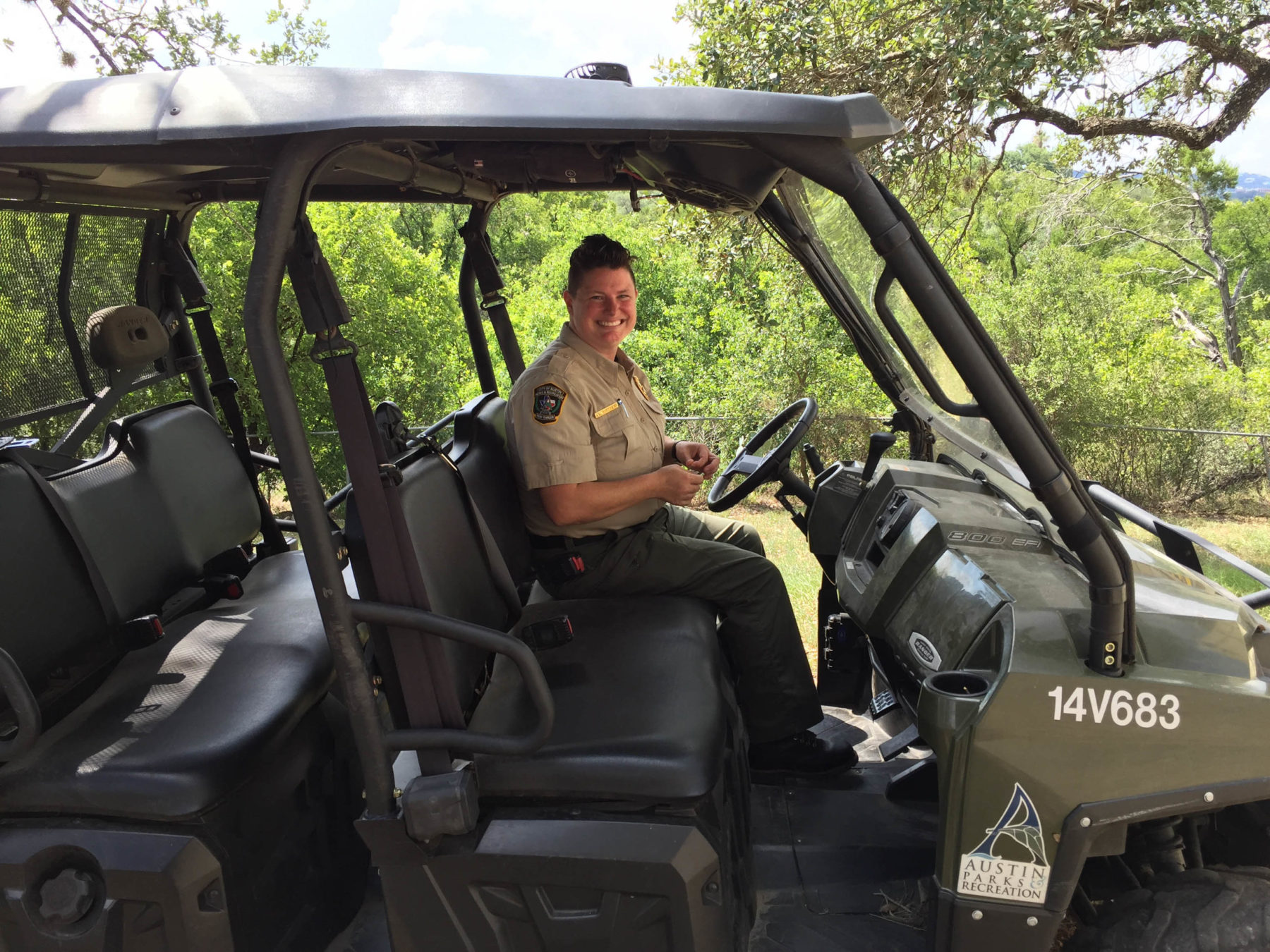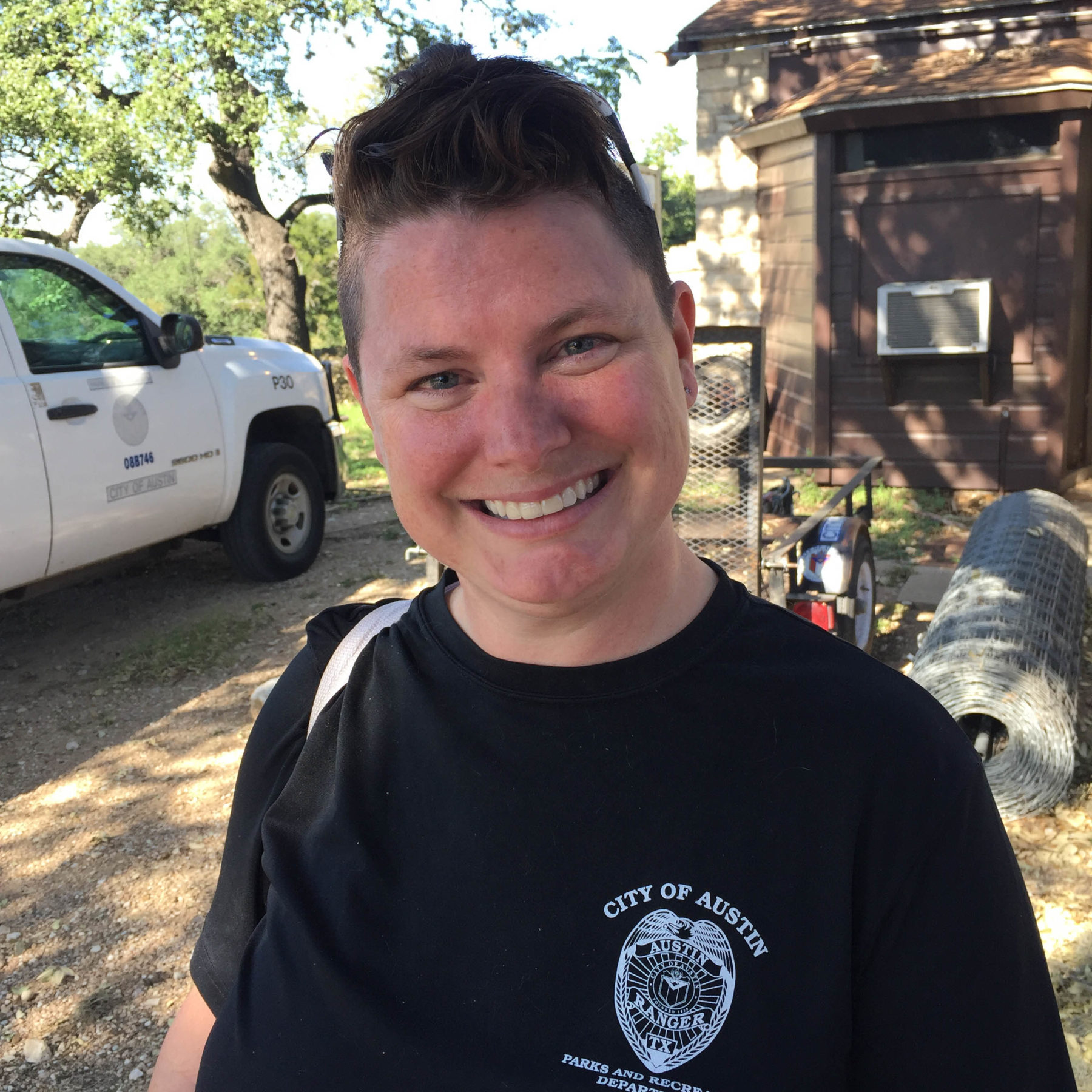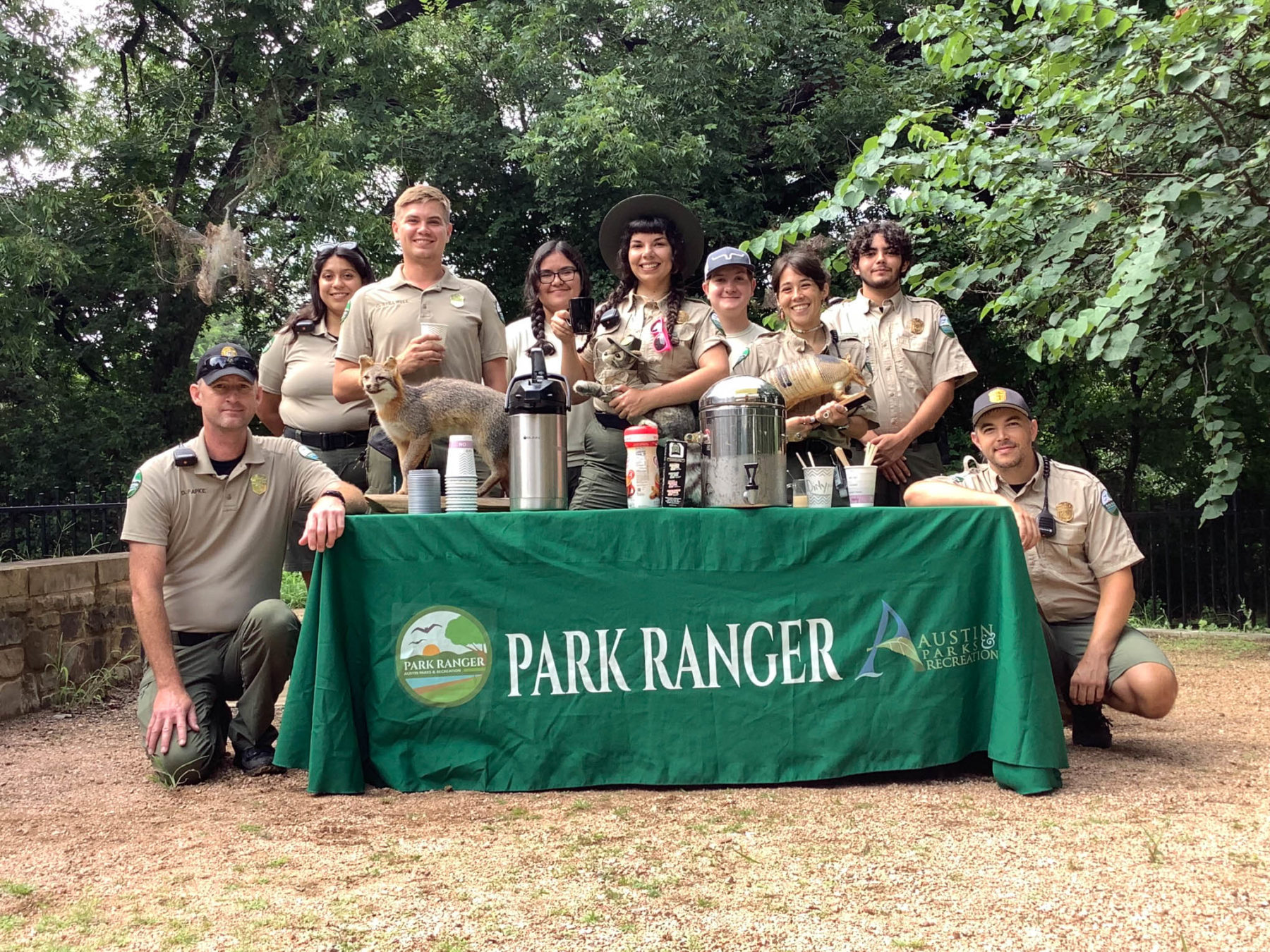Park Ranger Spotlight: LeAnn Ishcomer

LeAnn Ishcomer has been part of the Austin Parks and Recreation Department since 2009. As park ranger program manager, Ishcomer has helped the Austin Parks and Recreation Department create programs that encourage the community to spend more time in nature.
“Before I was in my 20s, I didn’t know somebody could make money working outdoors,” Ishcomer says. “The first time I went camping, it was like a light bulb moment for me.”
Ishcomer says that “light bulb” camping trip was at Green River Reservoir in Vermont, where she was overcome with the beauty of the state park. Seeing the park rangers working in that natural beauty, helping visitors stay safe and learn about the location, Ishcomer says that was when she knew this was the career for her.
After that, Ishcomer applied to be an assistant park ranger and got her first job as a park ranger at Boulder Beach State Park. Then, Ishcomer went on to graduate school at the University of North Texas, earning her masters degree in educational leadership. She says she wanted to further her organizational development and curriculum strategies that could apply to her work with the Park Ranger unit.

Fast forward to today, and Ishcomer has been a park ranger for over 12 years, utilizing her passion and her skill set to help citizens find access and connection to nature. As the program park ranger, Ishcomer says she views her current position in two parts: program manager and park ranger.
“The program manager is a facilitator for the rangers and the facilitator to the business process that needs to be done,” Ishcomer says. “The park ranger is something I deeply identify with. The role there is to protect folks in the park and protect the parks themselves.”
As program manager, Ishcomer and her team create programs to attract all citizens to visit the parks. She works with her team to present activities for all members of the community to feel welcomed to spend time in nature.
“In the past year and a half, the park rangers have been trying different initiatives, one being the junior park ranger booklet, which is actually in English, Spanish, Vietnamese and Arabic,” Ishcomer says.
Although the recommended age is 5-10 years old, Ishcomer encourages anyone who is interested in the parks to participate. Plus, when you send in your completion, you can earn the junior park ranger patch, which looks similar to the patches the rangers themselves wear.
Not only are there activities that children can do to feel part of the community, but all of the dog lovers in Austin can join in on the fun that the local parks have to offer through the Bark Ranger program. Designed to promote recreation with dogs, the program teaches how to be with your dog in the heat and on a trail.
Ishcomer also says that her team feels it is important to designate a time for the community to come together, talk with the park rangers and learn more by being in the parks.

One such educational and community event is the Coffee with a Ranger program that takes place every Saturday from 10 a.m. to noon. Ishcomer says it’s designed to answer any questions about the park, programs and preservation.
“We have made all of these programs to be proactive with the community,” Ishcomer says. “We are all on the same team to conserve the parks with all its resources for you and the entire community, hopefully for years to come.”
All efforts from the team are done to ensure that the parks are protected for years to come. Perhaps the best example of these efforts is the Leave No Trace program. While this is actually a national effort to reduce the impact on natural spaces, the local park ranger teams are actively working to ensure that Austinites know and follow the principle through educational programming. “It’s not necessarily one piece of trash or one person who’s disrespectful to other people [or] one unpicked pile of dog waste — it’s when it’s repeated over and over, ” Ishcomer says. “Those impacts are cumulative.”
No matter what the program is, they all have this idea behind them. But Ishcomer says that perhaps the most important thing they do, besides preservation and conservation, is making the parks for all people — ensuring that all people, no matter their background, feel comfortable and welcomed in the natural spaces.
“Parks and park rangers can create a sense of place, a sense of community and provide healing in a recreational opportunity as a time to wind down and have fun,” Ishcomer says. “We try to provide those opportunities to all citizens and visitors, not just a certain subset of people in Austin.”






